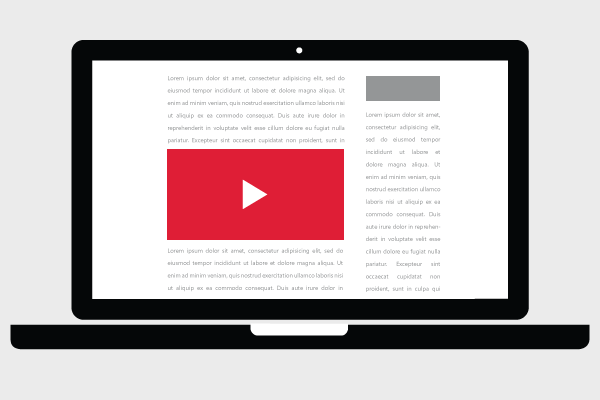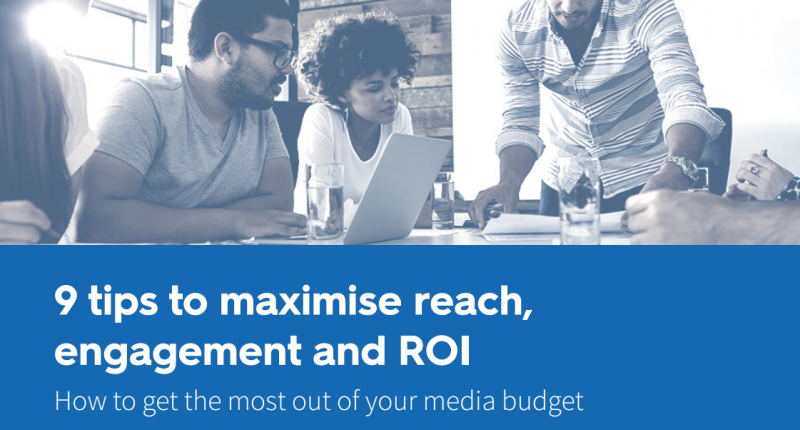As a Senior Programmatic Specialist here at Coast Digital, I spend most of my time helping our clients understand and make the most of their media budgets through the medium of display advertising and talking to prospects about the opportunity this channel presents.
As such, I regularly hear questions or misconceptions about programmatic display advertising. In this article, I’ll try to give some answers and tackle some misunderstandings by looking at 7 things I think you should know about display.
1. Display has the capability to reach huge audiences
This is starting with the basics and if you know anything about display advertising, you probably know this – display can reach massive audiences.
That’s absolutely true, but the important thing is to understand the nature of that reach. Programmatic display isn’t a scattergun – it’s not just a case of showing your ads to anyone that’s online at the time.
While the reach is huge, it’s also extremely targeted. This means you can reach a large number of people in your target audience.

2. Programmatic display allows for powerful targeting
So, how is this possible? It all comes down to powerful targeting algorithms that process vast amounts of data quickly.
Display works best when it’s set up to target specific moments, rather than audience segments. By placing targeting pixels on your site at moments that matter (e.g. transactions, form completions or high value pages), the platform can build a profile of the user taking that action.
Using variables like demographic data, interests, content they’ve viewed and devices they use, all the way through to when they last saw an ad, how many ads they’ve seen and what time of the day they are likeliest to convert, the platform can then go out in search for other users who share a similar profile – learning in real time.
This leads to accurate, cost-effective models that can differentiate your business and drive higher ROI.
3. You can tailor it to your objectives
The above example gives you an idea of how you’d set up a display campaign to find new prospects and convert them – but that isn’t all you can do.
By tailoring your approach, you can make programmatic display work to achieve your business objectives. Here’s some examples:
- Display can help you build brand awareness, by reaching more users that match your existing audience and putting your brand in front of them
- If you’re looking to drive prospects for a particular offering, have the platform search for look-a-likes – meaning those users that match the profile of those already engaged with that offering
- Keep users engaged by re-targeting them if they fall out of the behaviour you’ve identified for converting prospects – you can even show them specific messaging if they’ve engaged with a specific part of your website or offering

4. Display remarketing
Display gives you an exciting way to re-engage with customers that have visited your website in the past or have lapsed.
Rather than a simple text ad or an email, programmatic display allows you to put something that’s eye catching and engaging in front of those users. Just how eye catching can those ads be? Well, that brings us nicely on to…
5. Display is more than just banner ads
When you think of display advertising, many people just think of banner ads. In reality, the kinds of display advertising available now has expanded way beyond this.
Alongside static and html 5 animated banners, you could also consider:
- Video display – video is a great way to secure a user’s attention, especially on mobile. With options like in-stream, in-page and in-banner, this a flexible way to make more of your video assets
- Engagement ads – use powerful creative to encourage users to interact with your ads and explore the content within them, only paying for those users that intentionally engage
- Website takeover – take banner ads to the next level with a website takeover. Find a place that your target audience uses regularly, and put your brand front and centre

6. Creative matters
With the ability to reach a significant amount of your target audience and then to show them the kind of ad that’s most likely to achieve your objective – whether that’s a banner ad, a video or a piece of content – it’s easy to forget that what you put in from of those users is just as important as how you get it there.
Your ad creative is the thing that will do the job once the platform has found the user. If it’s an acquisition campaign, it needs to be strong enough to draw a click. If it’s a brand awareness campaign, it needs to be memorable enough to leave an impression in the user’s mind.
Here’s some quick tips for improving the performance of your display campaigns, whatever your objective may be:
- Be aware of ad fatigue. If you’ve been showing the same creative to your target audience for a while, then switching it up could see performance improve
- Knowing your audience is vital. You should be aiming to ‘personalise’ your ads to the kind of people that will be seeing them, ensuring they are as highly relevant to that specific user as possible
- Use multiple variations. Mix up colours, look and feel, and calls to action. This allows you to maximise what you can learn about what your audience will and won’t respond to, meaning you can be more effective in future
7. It’s not just for big businesses
There’s a perception that display adverting is only for big businesses.
I’m here to tell you that that isn’t true. We’ve seen clients with smaller budgets compete in the display arena thanks to programmatic. With the breadth of targeting and creative options now available, there will be an approach that works for your business.
Want to know more about programmatic display or about how to be more efficient with your media budget? Download our free guide – 9 Tips to Maximise Reach, Engagement and ROI.

